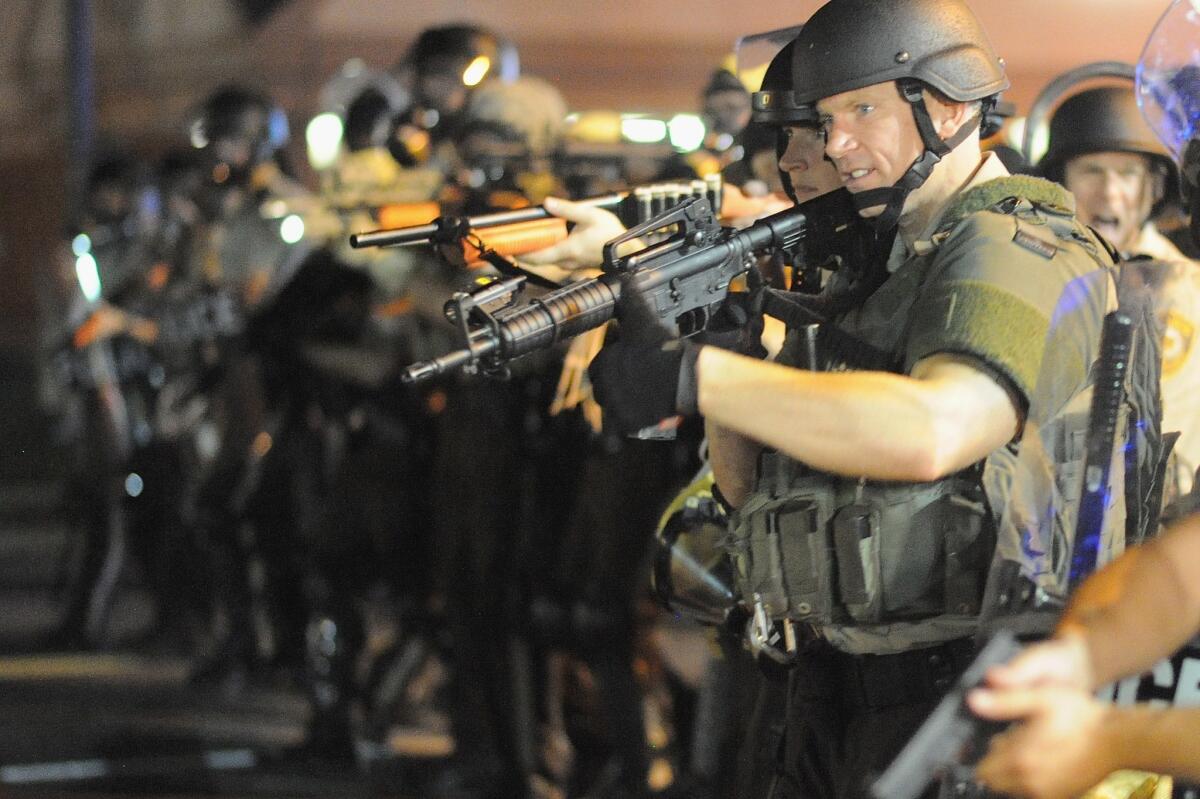Opinion: Why don’t we know how often a Michael Brown is killed by police?

- Share via
The shooting death of Michael Brown by a police officer in suburban St. Louis has spotlighted a wide range of policy questions and social issues, from police training and militarization (evident with the response to the post-shooting protests) to the nation’s black-white divide over perceptions of racism, to the extension of urban-style poverty and unemployment to suburbia. The pivotal question, though, is how often do these killings occur? How often do police gun down unarmed black men on the nation’s streets?
It turns out no one knows, because federal statistics collectors and many local police departments don’t track violent encounters between officers and civilians. A cynic might see something nefarious in that. By not collecting and collating such data, law enforcement can hide the scope of misdeeds from the public as well as civil liberties activists and lawyers for the families of the dead.
But academics like Samuel Walker, who has long been frustrated by the lack of available data, see something more mundane at play. “It’s just not an urgent issue for them,” Walker says.
It should be. One of the first steps to solving a problem is to identify and quantify it. Anecdotally, and through media accounts, it seems clear that people – particularly African Americans – die in officer-involved shootings often enough to justify concerted efforts at finding fresh approaches.
But absent the data to define the scope, it’s difficult to prescribe solutions. Is racism a significant factor? Or do these deaths stem from documented tendencies by police to be more forceful while working in high poverty, high-crime neighborhoods, which are disproportionately populated by minorities?
Police work can be dangerous, and officers often are forced to make life-and-death decisions in the blink of an eye as they confront people who, in this gun-crazy culture, often are armed. Those who choose law enforcement for a career deserve our thanks, and a certain amount of consideration for the difficult nature of the job. But that shouldn’t extend to turning a blind eye to bad performances, and abuses.
It’s also true that relatively few of the millions of encounters between law enforcement and civilians each year result in physical confrontation, and fewer still in the deaths of the innocent. But those that do demand close scrutiny by both police superiors and elected officials responsible for police agency oversight.
As it is, the nation’s 17,000 law enforcement agencies tally and submit local crime statistics through the federal Uniform Crime Reports program overseen by the Federal Bureau of Investigation. The government also tracks deaths of law-enforcement officers at the hands of criminals. It would not be a significant challenge to add reporting components about the deaths of civilians at the hands of police officers.
Attorney General Eric Holder could easily make this happen with a directive, and he should do so. One indicator of what a society values lies in what it chooses to measure. That we don’t track these incidents, and understand them better, can be seen as an indictment of our ideals.
Follow Scott Martelle on Twitter @smartelle.
More to Read
A cure for the common opinion
Get thought-provoking perspectives with our weekly newsletter.
You may occasionally receive promotional content from the Los Angeles Times.











